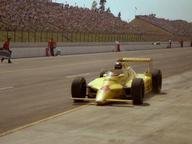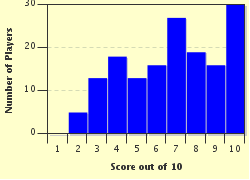Quiz Answer Key and Fun Facts
1. The first driver killed during an official Formula One championship race (not practice) was an Italian talent. It happened on July 6, 1958, during the French Grand Prix. What was his name?
2. One of the most famously killed Formula One drivers was a German who, starting the last race for the year, was just a few points away from winning the 1961 World Championship. What was his name?
3. British driver John Taylor was in his second season of Formula One racing when his car collided with that of Jacky Ickx, during the first lap on a famous circuit (no longer being raced in that configuration today because of its notorious lack of safety). Responsible for five Formula One deaths, three of those during a race, which track holds this unfortunate record?
4. The Zandvoort track in the Netherlands was notorious for accidents with severe and sometimes fatal injuries. In 1970, British driver Piers Courage died in a fiery crash on that track, but the cause of death was a head injury caused by what object?
5. This driver was the first posthumously crowned World Champion after losing his life on the track. Who was this unfortunate 1970 casualty from Austria?
6. 1978 saw the tragic death of another Formula One driver who could well have won the championship had his career not been cut short in a drastic way. A mass crash involving ten cars during the Italy Grand Prix ended fatally for which European driver?
7. 1982's Formula One season was marred by the death of a high profile driver from Canada. With 6 wins and a second place in the World Championship, he was by far the most successful Canadian driver until his son, fifteen years later, took the crown for himself. Who was this legendary driver?
8. Naming a circuit after a driver killed in an accident is a very dignified way of preserving that driver's legacy. However, in one case it proved to be a bad omen with the just rededicated track seeing a fatal accident on the very first race run after the naming ceremony, just weeks after the death of the driver the track was named for. Which driver lost his life at the Canadian 1982 Grand Prix?
9. Any race with a killed driver is a tragedy, but more so when there are two deaths in a single race. In the 1960 Belgian Grand Prix, both deaths occurred during the race itself, in the same turn, just minutes apart and to drivers of the same nationality. Which country did the two victims of this race come from?
10. The last two deaths of 20th century Formula One also occurred during one tragic weekend in 1994. After the qualifying had already been marred by the death of Austrian rookie driver Roland Ratzenberger whose car struck a wall at over 310 kph (195 mph), the race itself had another fatal accident, killing one of Formula One's most famous and beloved icons. What was this legendary driver's name?
Source: Author
WesleyCrusher
This quiz was reviewed by FunTrivia editor
gtho4 before going online.
Any errors found in FunTrivia content are routinely corrected through our feedback system.

